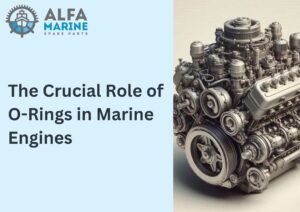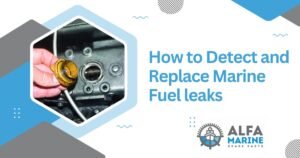The marine propulsion engine, a.k.a. main engine, drives the propellers to sail a ship throughout the voyage. Propulsion systems in small lightweight vessels operate on gasoline. However, the main engine in large cargo and passenger ships requires heavy fuel to regulate the propellers. These engines primarily run on diesel or hybrid fuel systems.
In this blog post, we provide an overview of the main engine responsible for continuous power supply to the marine propulsion systems.
Types of Propulsion Engines in Modern Marine Vessels
The main engine or propulsion system varies in terms of fuel type, speed (revolutions per minute) and the type of combustion cycle. Here is an overview of various types of revolutionary propulsion engines and their attributes:
#1. Marine Diesel Engine
Modern ships feature screw propellers best driven by marine diesel engines. These high-efficiency and versatile engines offer supreme reliability for heavy-duty vessel operation. The prime function of a diesel engine is to produce mechanical energy from thermal combustions for operating the propeller motors. From small recreational crafts to large cargo vessels, these engines are available in diverse configurations to meet specific power output ranges.
#2. Diesel-Electric Marine Engine
The diesel-electric engine models comprise a diesel engine to supply energy to the electric generators. These generators supply electricity to run the propeller motors. These modules are excellent for giant yachts, offshore vessels, passenger crafts, cruise liners, etc. The propellers are connected to the crankshaft directly or through reduction gear to receive power from the motors.
#3. Solar Propulsion Systems
Solar propulsion system is the new-age zero-emission powering solution and a clean-energy source for regulating propeller operations. Nevertheless, the ships relying on marine-grade solar panels for power supply boast powerful diesel engines. The hybrid system offers a backup energy solution for extreme weather conditions when solar modules cannot generate sufficient power.
Integration to solar-power modules requires additional equipment setup along photovoltaic (PV) panels. The PV cells are connected to the inverters, MPPT charge controllers, and battery packs.
#4. Gas Turbine Systems
Gas turbine systems are a prevailing choice for aircraft propulsion due to their lightweight, compact design, and supreme weight-to-power ratio. However, this is an expensive option for the marine industry in terms of initial setup costs and high fuel consumption.
Despite the limitations, gas turbine propulsion systems are an indispensable choice for the efficiency of regulating quick mobility during emergencies. Gas turbines resemble the steam engine in working principle.
The compressed gas from the compression chamber passes to the combustor. This requires a good quality air-fuel mixture for successful combustion after the ignition. The combustion induces heat energy into the fluid that later passes through the turbine. A partial amount of heat energy provides power to the compressor while the remaining pressurized gas passes into the exhaust at high velocity.
How do Diesel-Powered Main Engines Work
The main engine caters uninterrupted power supply to the rotating crankshafts that move the propellers. The crankshaft in slow-speed engines is coupled directly to the propulsion system. This requires an additional reduction gearbox in medium and high-speed diesel engines. There is an electric motor and alternator configured to the propulsion system in diesel-electric models.
Diesel engines are a popular choice for vessel operators for the simplicity of structural framework. The injection system introduces a round of fuel and air into the combustion chamber for each cycle. There is a piston to compress the cylinder volume to trigger the combustion (without any spark apparatus).
Are you looking to upgrade to a modern marine propulsion engine?
Alfa Marine Spare Parts has everything covered for shipbuilders and vessel owners. Browse our gallery to explore the extensive range of main engines from top brands – Cat, Cummins, Wartsila, Scania, Perkins, Doosan, Volvo Penta, Mitsubishi, and more.







